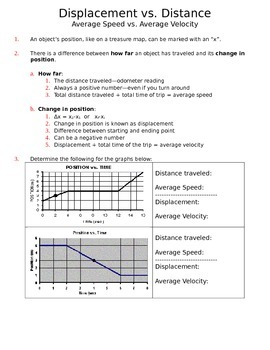STEM/NGSS: Physics Displacement vs. Distance Exercise
Next Generation Science Guy
86 Followers
Grade Levels
8th - 12th, Higher Education, Adult Education, Homeschool, Staff
Subjects
Resource Type
Standards
CCSS8.EE.B.5
CCSS8.EE.C.7
NGSSHS-PS2-1
Formats Included
- Word Document File
Pages
2 pages
Next Generation Science Guy
86 Followers
Description
Students explore and apply differences and similarities between two commonly-confused physics terms.
Activity includes calculations and graphic analysis.
Activity serves as a review or a preview of lessons on displacement and distance.
Total Pages
2 pages
Answer Key
Not Included
Teaching Duration
45 minutes
Last updated Sep 7th, 2015
Report this resource to TPT
Reported resources will be reviewed by our team. Report this resource to let us know if this resource violates TPT’s content guidelines.
Standards
to see state-specific standards (only available in the US).
CCSS8.EE.B.5
Graph proportional relationships, interpreting the unit rate as the slope of the graph. Compare two different proportional relationships represented in different ways. For example, compare a distance-time graph to a distance-time equation to determine which of two moving objects has greater speed.
CCSS8.EE.C.7
Solve linear equations in one variable.
NGSSHS-PS2-1
Analyze data to support the claim that Newton’s second law of motion describes the mathematical relationship among the net force on a macroscopic object, its mass, and its acceleration. Assessment is limited to one-dimensional motion and to macroscopic objects moving at non-relativistic speeds. Examples of data could include tables or graphs of position or velocity as a function of time for objects subject to a net unbalanced force, such as a falling object, an object sliding down a ramp, or a moving object being pulled by a constant force.



